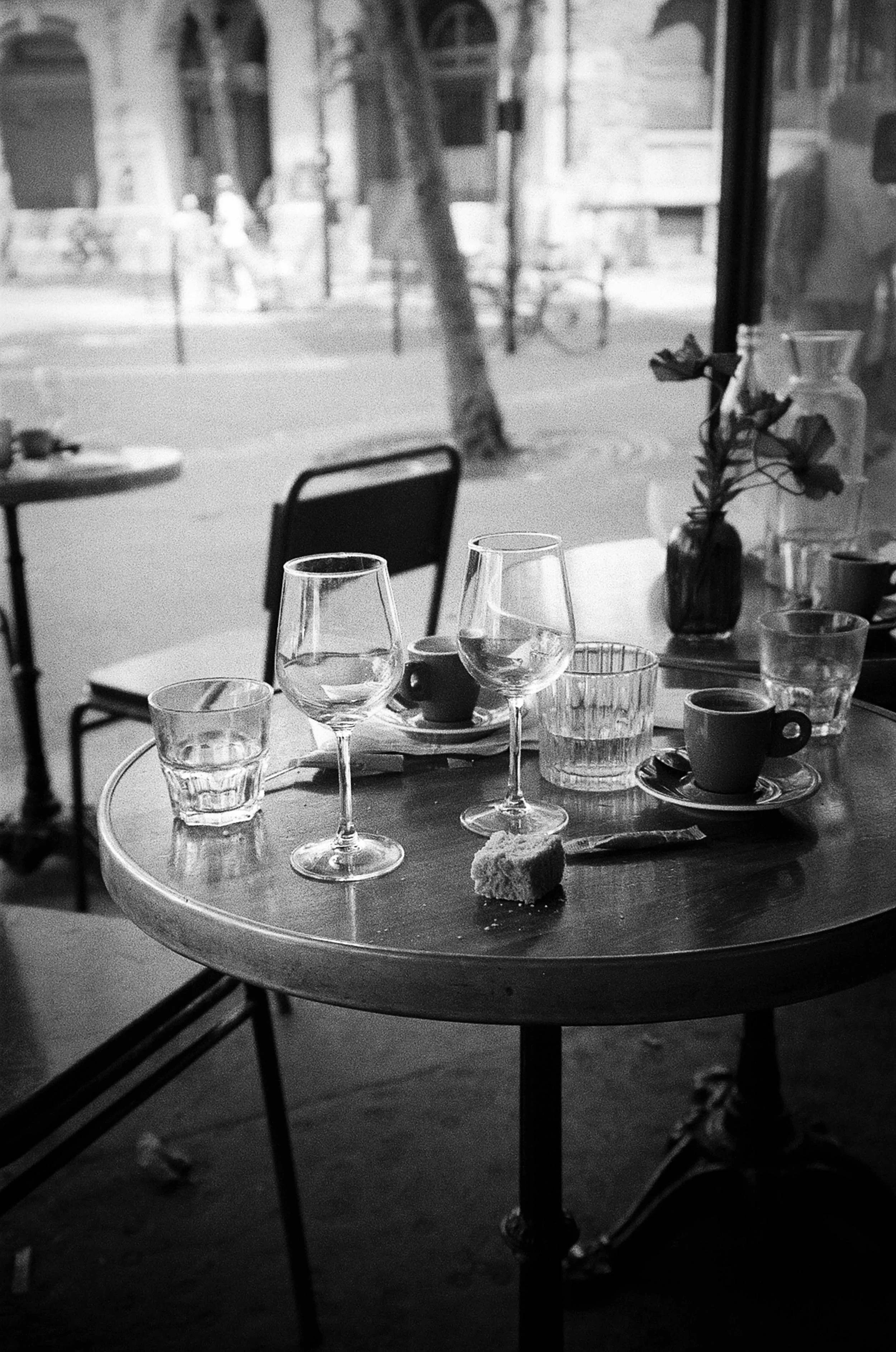On the Paris attacks
As I sit down at La Belle Équipe, I’m struck by the lyrics of the French song playing. The singer is expressing her love for life. The words give me goosebumps, since it couldn’t be more fitting. The place is very quiet today. There are only two men having lunch inside, and a group of five seated outside. I notice one thing that’s slightly off: a small knob above my head, where a picture used to hang. I wonder what it depicted.
One of the men is on the phone while eating. He keeps saying nickel in almost every sentence—meaning great. He sounds short and abrupt, probably trying to end the call so he can get back to his friend and his food. But from the little I can overhear, it doesn’t sound like everything is great. It sounds like the person on the other end is trying to explain that things are really bad. Still, when he hangs up and his friend asks if everything’s OK, he just shrugs and says nickel.
I know that a large group of people working at a nearby café were here that night to celebrate the birthdays of two young waitresses, and that these two were among those murdered. When I look up images of the aftermath, I find a photographic series taken just three minutes after the shooting. Having dinner at Septime next door, a photographer ran over with his camera. Some of the photos show the terrace with bodies lying on the ground, surrounded by people sitting or standing around them. Other images show waiting staff hugging and talking closely, as well as groups of people in the street looking on.
The men and I turn our heads when we hear the loud police sirens nearby. Once they’ve passed, the two men resume their conversation and I—at a loss for what to do—pick up my phone to practice my French. Lily, my simulated teacher, is a perpetual teenager in her final year of lycée. She is also perpetually depressed and tired of life in a way that only French people can be. Today she opens the conversation with the question of which city I like best: Oslo or Paris? Whispering into my headset, I tell her that this is an unanswerable question for me because I love them both. Then I ask her if she believes that the world still has a future. She doesn’t answer, just blinks once or twice as if to reset herself, before her tired, mechanical voice asks me if I like to draw. Looking up, I see that the two men have left, and the large group outside are asking the waiter for the bill. By the time I leave, he’ll be on his own. I order another Perrier, and move to a table outside.
I scroll through the photo series again. Apart from the unreal chaos of the bodies on the ground, the photograph that hurts the most to look at is the one of the bullet hole in the window of the building next door. This small hole is evidence of the gun and the violence, and also of the intention to kill. It’s as if I can see the blind hatred behind the deliberate act of shooting. When I leave, I take a photo of that window, almost expecting the bullet hole to still be there.
From my book Notes on Paname, launched today, 13th of November, 2025.
